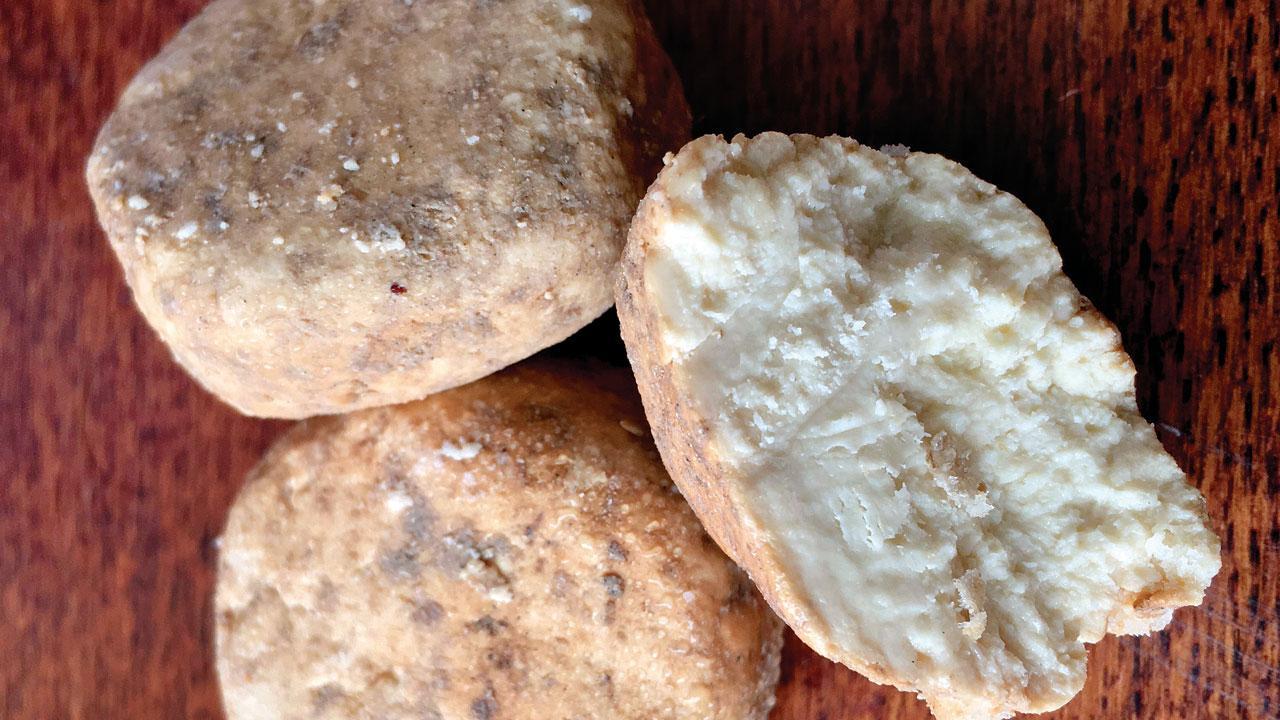With the US celebrating National Cheese Day tomorrow, cheesemakers and culinary experts give us the lowdown on indigenous varieties that are made in India

Bandel cheese that’s curated by Jasani
From adding fresh Greek feta in salads to pairing wine with a light brie or camembert, Indians are increasingly sniffing out ways to include cheese varieties from across the globe in their diet. But cheesemakers and connoisseurs tell us that there is a host of indigenous varieties, such as kalari and chhurpi from the Himalayas, Bandel from Bengal or topli nu paneer in Parsi households, and of course, the ubiquitous paneer and chhenna, that are waiting to be lapped up. Ahead of National Cheese Day in the United States on June 4, four experts take us on a trail of some desi cheeses across India.
ADVERTISEMENT
In Mumbai and Gujarat
Closer to home are the Parsi topli nu paneer and Surti paneer, which, food historian and Parsi caterer Kurush Dalal shares, are quite similar. “The main difference is that the topli cheese curd isn’t compressed; it’s put in small salted tokris and allowed to gently lose its whey.
Topli nu paneer by Tamboly
Whereas the Surti paneer is available in a variety of sizes, and was primarily made by the Bohri community,” he says. Both Dalal and Parsi cheesemaker and home chef Delna Arzan Tamboly have fond memories of paneerwalas swinging by their neighbourhoods daily with large aluminium cans of cheese. They share that topli nu paneer is made using a rennet that comprises either the chopped-up insides of a chicken gizzard or a goat’s intestines.
Delna Arzan Tamboly
Tamboly, who’s been using a vegetarian rennet made following her mother-in-law’s recipe for over 15 years, adds that the texture of topli nu paneer is delicate. “We eat it just like that or with a dash of roasted cumin powder. Some use it for salads. It bears the markings of the topli [Gujarati, for basket],” she says, adding that these baskets are getting harder to source in the city now.
Looking east
Breach Candy-based Mansi Jasani of The Cheese Collective informs us that a majority of indigenous cheeses in India originate from along the Himalayan range. This includes chhurpi, a popular cheese in Sikkim, Nepal, Bhutan and north Bengal that’s made from cow or yak’s milk.
Chhurpi. Pic Courtesy/Wikimedia Commons
“The hard chhurpi is chewy; mountaineers munch on it and you get chhurpi sticks for dogs too.” Trek down from the Himalayas in the East, and you find Bandel cheese. Now a major town in West Bengal, Bandel was an erstwhile colony of the Portuguese who introduced the cheese. “There is a smoked, hard Bandel and a soft one. The former has a heady smoky smell, like you’re sitting next to someone who just smoked a pack of cigarettes. It can be had on its own or crumbled on salads,” she says.
Mansi Jasani
Another cheese from Bengal, Dalal notes, was brought along by the Jews and can be found at the iconic Kolkata confectionery, Nahoum’s. “They add it to their cheese samosas,” he recollects.
From the Valley
Netherlands-born Chris Zandee, who runs Himalayan Cheese in Kashmir, shares that kalari is a local cheese that you can find in both Jammu and in the Valley.
Terming it “Indian mozzarella”, Zandee claims the cheese is indigenous to the Gujjar herders. “The Jammu kalari is like a ball, which is squeezed flat when you cook it. The Kashmiri kalari includes a few more steps in the process, and is shaped like an American pancake,” adds the Srinagar resident.
Kalari made by Chris Zandee
Owing to its shape, it’s also called milk roti. “Kalari is eaten fresh in households; kids throng to the kitchen when it’s made. It’s also fried, or eaten as a snack sandwiched in buns or rotis,” he says.
Pan-India essentials
Paneer, a fresh cheese
While cheese-making is often thought of as an imported concept, the practice has been a part of everyday Indian kitchens for generations, in the form of paneer and its cousins, chhenna and khoya. Jasani shares it was possibly the Portuguese who popularised the notion of splitting milk.
Kurush Dalal
“And some of the immediate byproducts were chhenna and paneer. It’s also interesting to note that ‘peynir’ in Persian means cheese,” she reveals. Dalal, meanwhile, points out that these fresh cheeses possibly came into existence to avoid wasting milk, which spoils easily.
Order in a slice
>> The Cheese Collective curates a range of Indian cheeses, including Bandel.
Call: 9820059926
>> Get your hands on the Kashmiri kalari produced by Himalayan Cheese.
Log on to: himalayancheese.com
>> Tamboly is one of the few Parsi home chefs making topli nu paneer in Mumbai.
Call: 9820660994
>> This e-commerce store sells chhurpi.
Log on to: amazon.in
 Subscribe today by clicking the link and stay updated with the latest news!" Click here!
Subscribe today by clicking the link and stay updated with the latest news!" Click here!







